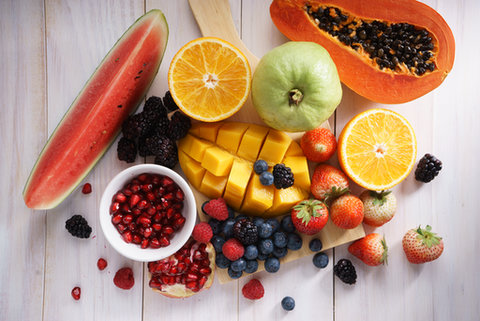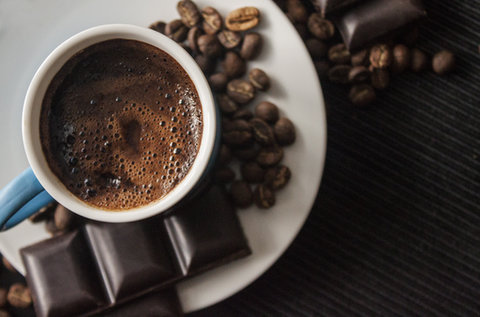
body of
evidence
Rock music can be a sensory overload. Flashing strobe lights, pounding drumbeats that you feel, guitar riffs that assault your ears. Nirvana had a smash hit with the song, Smells like Teen Spirit, apparently a nod to the deodorant that lead singer Kurt Cobain used. The senses are underrated until we are alerted to their uses.

Sight, sound, touch, taste, and smell; the senses which are so intrinsic to life that we are almost unaware of them – until they are absent. In the early days of the pandemic, the loss of taste and smell were two initial red flags that Covid had struck.
Speaking to one or two people who recovered after a bout of coronavirus, they said a loss of appetite was to be expected with any disease because you just don’t feel good and eating is a chore, but to have zero taste was disturbing! Since there was no flavour to anything, there was little pleasure in consuming food. It was universally bland and uninteresting, and the psychological let-down of a tasty morsel they’d previously enjoyed was hard to bear. The same went for their olfactory sense. Imagine not being able to smell a rose, a cup of freshly brewed coffee, a pungent cheese or glass of cabernet?


In the early months of the global pandemic, the loss of taste and smell was noted and then studied by researchers. One of the most interesting elements discovered by the scientists was people who are extremely sensitive to bitter flavours – so-called supertasters – tended to have a lower incidence of Covid. A research study conducted in America looked at the susceptibility to the airborne virus of non-tasters, normal tasters and supertasters.
In late May 2021, the study was published. The abstract contained on an open scientific network noted: “Bitter taste receptors (T2Rs) have been implicated in sinonasal innate immunity, and genetic variation conferred by allelic variants in T2R genes is associated with variation in upper respiratory tract pathogen susceptibility, symptoms, and outcomes. Bitter taste receptor phenotype appears to be associated with the clinical course and symptom duration of SARS-CoV-2 infection.”
So from July to September 2020 a study was conducted (and later written up by Henry P. Barham, MD1,2; Mohamed A. Taha, MD1,3; Stephanie T. Broyles, PhD4; et al Megan M. Stevenson, BSN1,2; Brittany A. Zito, BSN1,2; Christian A. Hall, MD1,2) among 1 935 participants at a facility in the United States. Study participants were patients and healthcare workers who had occupational exposure to SARS-CoV-2.
The bottom line is that supertasters – or people with more bitter taste receptors (T2Rs) – appear to have better immunity against the coronavirus. In scientist speak: “A growing body of literature has suggested a role for bitter taste receptors (T2Rs) in sinonasal innate immunity2-5; these extraoral T2Rs are present on ciliated epithelial cells and solitary chemosensory cells. T2R38, one of the many isoforms of T2Rs, is a receptor that is localized to motile cilia in humans, agonized by phenylthiocarbamide (PTC) and propylthiouracil (PROP).6 When T2R38 is stimulated by agonists, nitric oxide (NO) is produced to increase mucociliary clearance and kill pathogens in the human respiratory tract mucosa.3”
Essentially, supertasters’ noses are efficient at detecting and repelling the virus – a mucousy first line of defence, preventing the nasty bugs from reaching the lungs’ delicate tissues.
A recent visit to Seven Oaks in the Breedekloof, a hop, skip and jump away from the eye-catching Bosjes* on the R43 between Worcester and Wolseley, reminded me of the importance of smell. This wine farm is one of the hidden gems of the area. And it has a unique visitor offering: a sensorium filled with Perspex jars of smells. It’s a fun activity which children and adults alike can participate in.
Owner Patrick Pols spins a great yarn, telling the tale of how he bought the farm at an auction in 2003 – without telling his wife! Apparently, something of a repetitive pattern, his patient spouse Jacqui recounts wryly. So, he had to sell it to her – which he did by waxing lyrical about the seven majestic oak trees lining the driveway. “If we can call the farm Seven Oaks, it’s ok,” she said. But two years later, when they moved to the property – a real “fixer upper” in estate agent speak – she and their children noticed there were only six oak trees. So, they quickly planted a seventh … Which also explains why one of the ranges appears under the label 6 + 1.

Inveterate auction attendee Patrick Pols in full flow

A natural mountain amphitheatre, from Waaihoek peak to the Rooiberg summit, is the panoramic backdrop for Seven Oaks
Jacqui’s background is in IT and is one of the reasons why visitors to the tasting room are encouraged to test their noses in the sensorium. There are just under 30 aromas contained in the specially designed jars which are unlabelled. Above each is a QR code which anyone armed with a smart phone can scan to obtain the answer and see whether they identified cloves, TCA or lemon.
Seven Oaks wines range from a bubbly made for them by Melanie van der Merwe (former JC Le Roux bubbly meister and now owner of her solo Tanzanite brand), a range of red and white wines as well as a sauvignon blanc noble late harvest.
It’s well worth a visit – and is less expensive than a PCR test!
*It was announced in early December that Bosjes had notched up another notable achievement: it was awarded a Prix Versailles special prize for Exterior Africa and West Asia 2021 for the Spens, designed by Coetzee Steyn of Steyn Studios in London. Both the Spens and Bosjes chapel are visually arresting – yet another sense stimulation.
BACK TO TOP